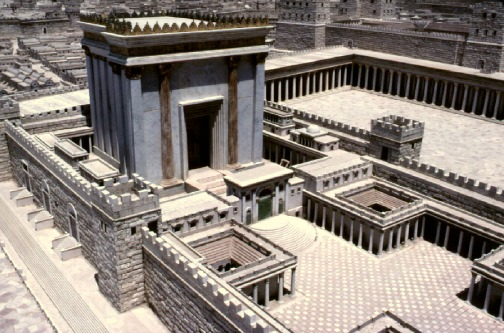Astronomical symbolism of the Jewish Temple
Posted: Sat Jun 13, 2009 9:51 pm

When we look at the stars (the heavens) we cannot help but to admire the works of God. God is completely interwoven into the universe and the planets so we shouldn't be surprised that he mimicked this pattern into His divine temple. God's temple (tabernacle) was a physical replica of the heavens and we have scripture to confirm this Hebrews 8:5;Hebrews 9:23-25;Exodus 25:40.
But what about the physical identity of the temple? How was it perceived back then? We have scripture that gives us the outline of the temple and it's furnishings (Exodus 25) but a lot of it is not very clear. Fortunately for us we have a few historians that can give us some better insight into this. One of them was the first-century Jewish historian, Flavius Josephus.
According to Josephus, the Jewish temple represented the universal visibility of heaven in "War of the Jews", Book V, chapter 5:4. Also in his book “Antiquities of the Jews” chapter VI:7, he writes about the candlestick (menorah) representing, interestingly enough, the seven (visible) planets.
"Over against this table, near the southern wall, was set a candlestick of cast gold, hollow within, being of the weight of one hundred pounds, which the Hebrews call Chinchares; if it be turned into the Greek language, it denotes a talent. It was made with its knops, and lilies, and pomegranates, and bowls (which ornaments amounted to seventy in all); by which means the shaft elevated itself on high from a single base, and spread itself into as many branches as there are planets, including the sun among them. It terminated in seven heads, in one row, all standing parallel to one another; and these branches carried seven lamps, one by one, in imitation of the number of planets. These lamps looked to the east and to the south, the candlestick being situated obliquely.”
Next in Chapter VII:7, Josephus makes the claim that the table of shewbread and it's twelve loaves of bread represented the twelve months of the year.
Still not convinced? Well we have no farther to look than our next Jewish historian named Philo Judaeus. Philo seems to be giving another dramatic picture of the temple and it's heavenly symbolism. He also writes of the menorah.
"XLV. (221) But the long discussion which some people start with respect to each of these, must be postponed to a subsequent opportunity. This much alone we must remind our readers of at this moment, that the sacred candlestick and the seven lights upon it are an imitation of the wandering of the seven planets through the heaven. How so? some one will say. (222) Because, we will reply, in the same manner as the lights, so also does every one of the planets shed its rays. They therefore, being more brilliant, do transmit more brilliant beams to the earth, and brilliant beyond them all is he who is the centre one of the seven, the sun. (224) But men, being unable completely to comprehend the arrangement of the planets (and in fact what other of the heavenly bodies can they understand with certainty and clearness?) speak according to their conjectures. And these persons appear to me to form the best conjectures on such subjects, who, having assigned the central position to the sun, say that there is an equal number of planets, namely, those above him and below him. Those above him being Saturn, Jupiter, and Mars; then comes the Sun himself, and next to him Mercury, Venus, and the Moon, which last is close to the air. (225) The Creator therefore, wishing that there should be a model upon earth among us of the seven-lighted sphere as it exists in heaven, explained this exquisite work to be made, namely, this candlestick."
Here we have Philo saying that the menorah in the temple represents the Sun, Moon, Mercury, Venus, Mars, Jupiter, and Saturn.
And we have other sources outside the Bible that confirms this. In the Midrash in Deut. 1:9, it states..
"R. Simeon b. Yochai says, In the future the faces of the righteous will resemble seven joyous things: the sun, the moon, the sky, the stars, the lightning, lilies, and the menorah of the Temple."

The menorah (candlestick) represented an almond tree (Exodus 25:33) and other symbols, however on the tops of the tree were oil lamps that were lit continually. It is these lights that represented the visible planets, the moon and the sun. The sun being the center light (called the Servant lamp) in which the planets revolved around just like our solar system. Interestingly enough, at the age of Gentile Christianity, two more branches were added to the menorah at the festival of Hanukkah thus giving us a nine branch menorah. Who would know that during the Christian era that two more planets would be found in our solar system? We use to think that there were nine planets in our solar system, but since Pluto fizzled as a planet, we now have a total of eight. Exactly like the current day menorah!

More to come…


